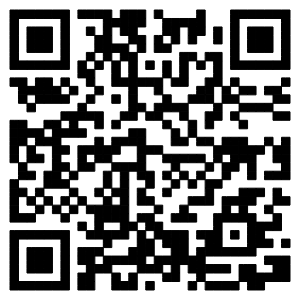
 {{_.$tools.formatDate(item.publishTime, 'yyyy-MM-dd')}} {{item.title}}
{{_.$tools.formatDate(item.publishTime, 'yyyy-MM-dd')}} {{item.title}} 
Dangerous Goods

Security Control Articles
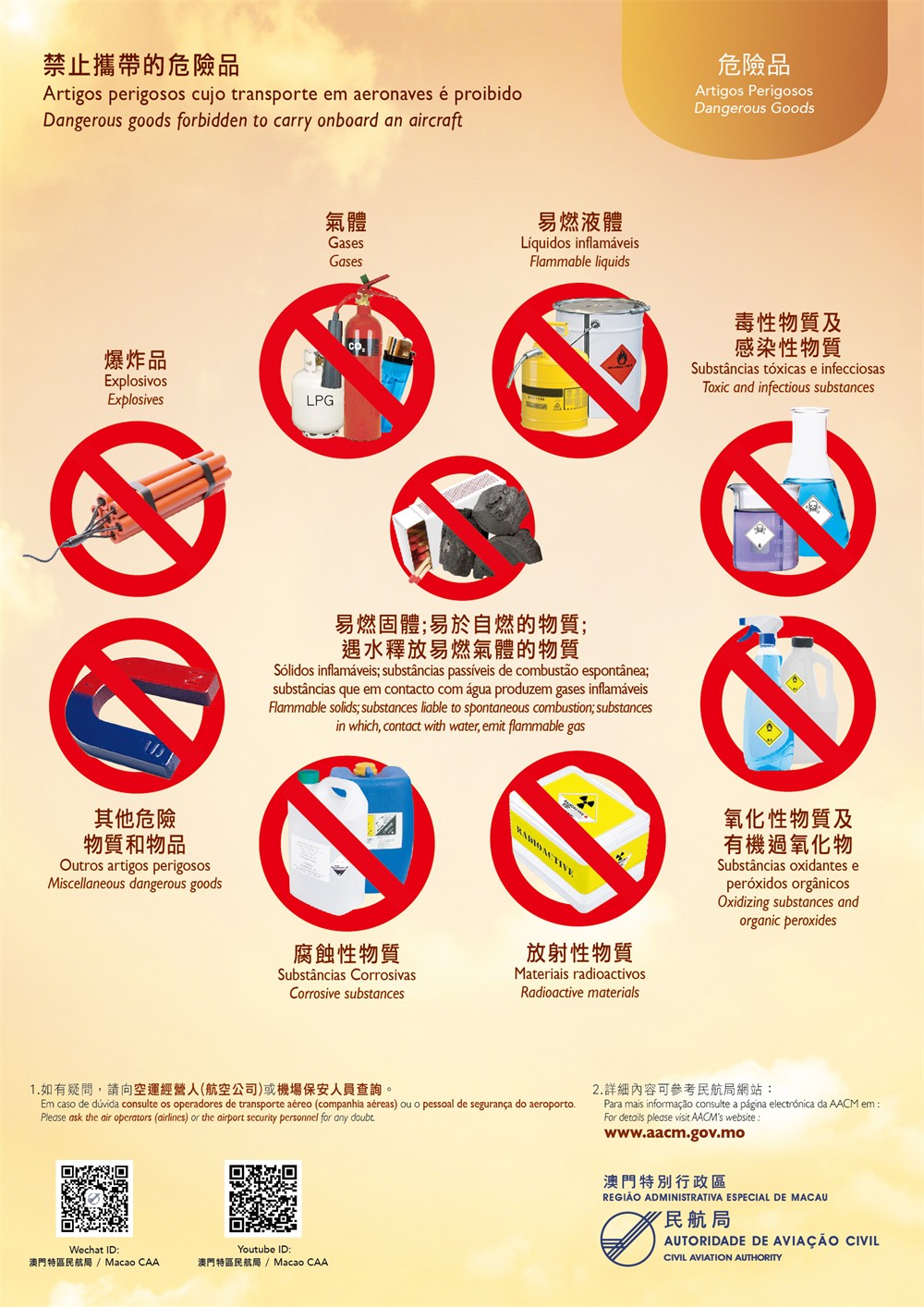 |
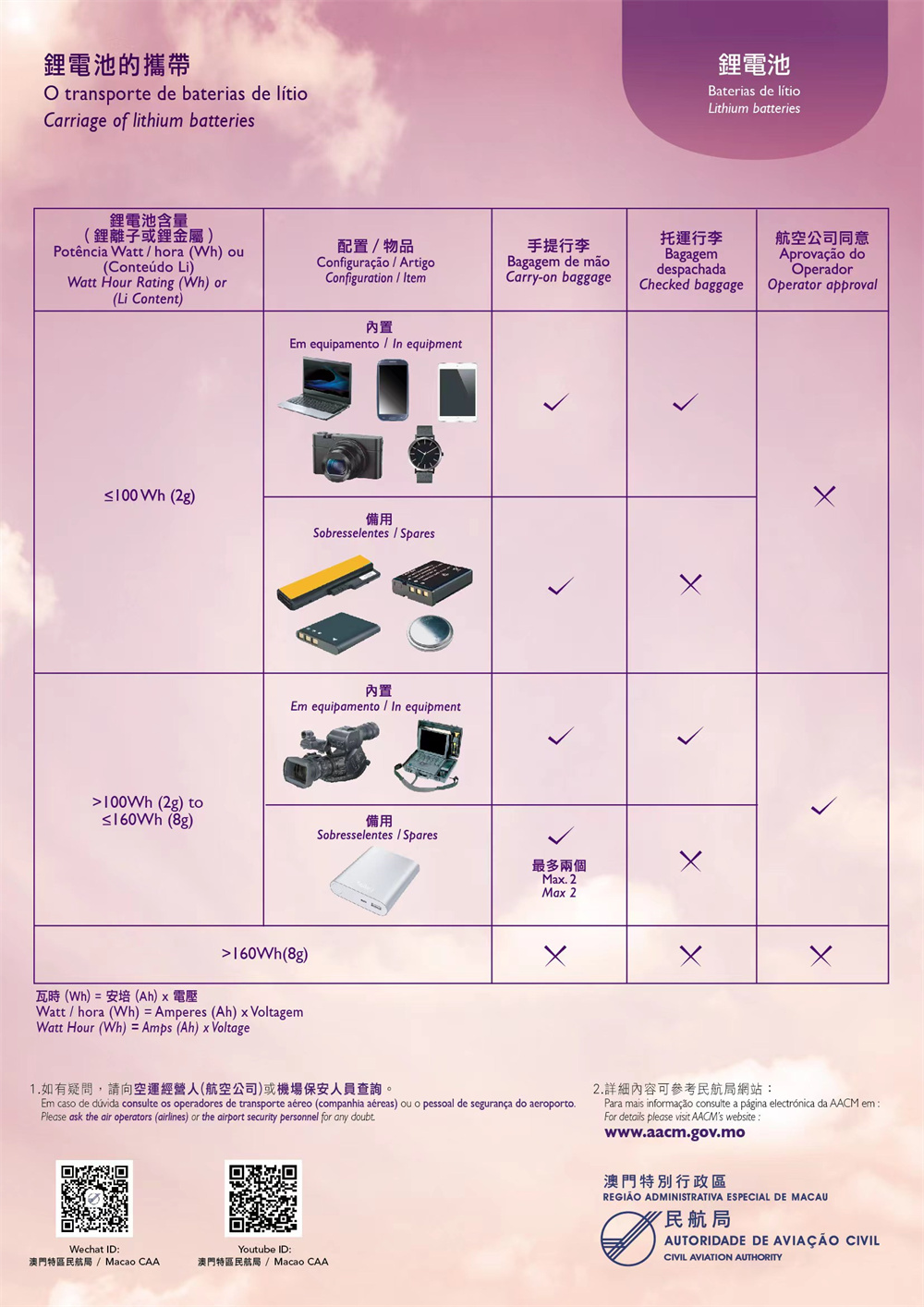 |
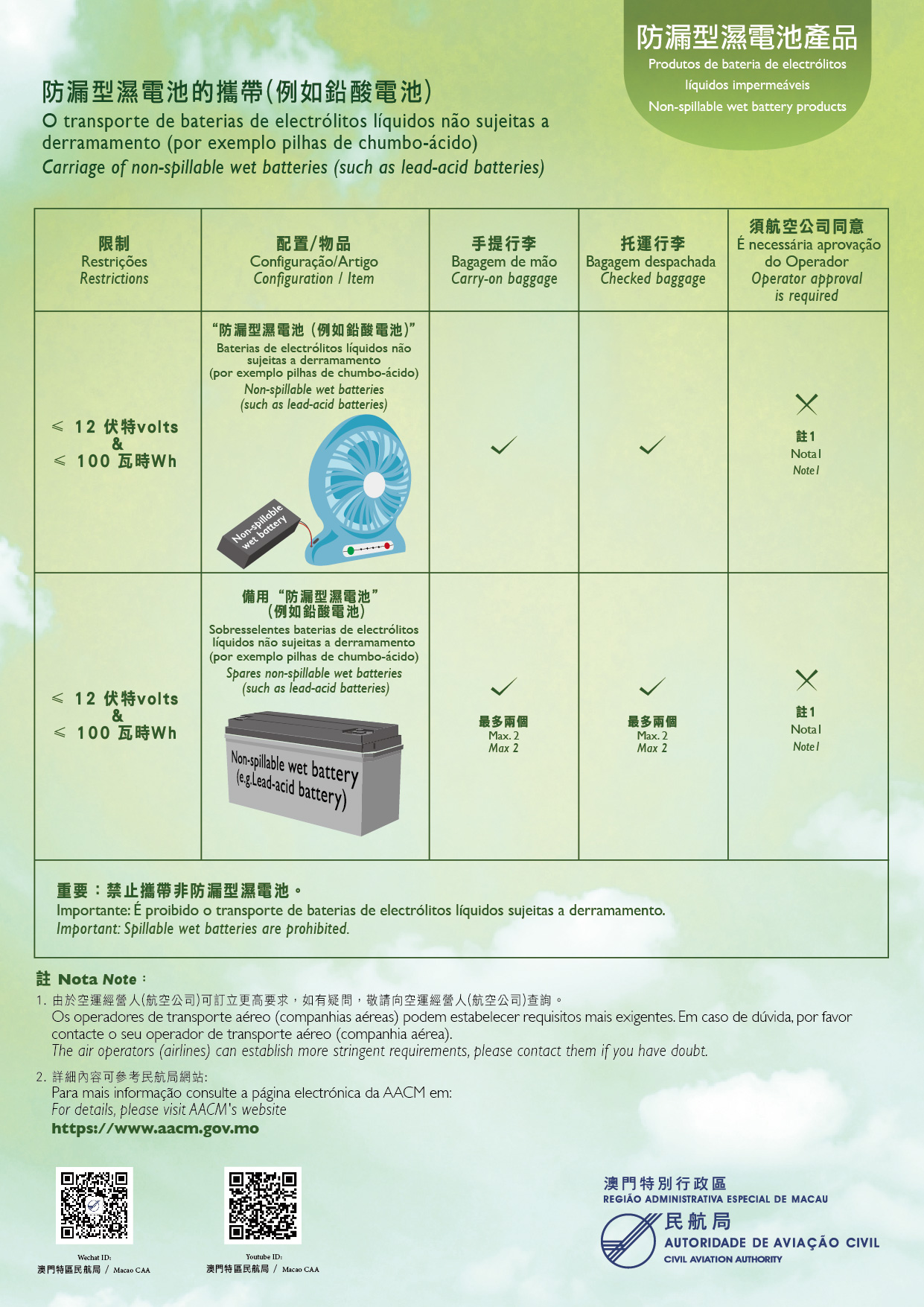 |
Dangerous goods are articles or substances that are capable of posing a risk to health, safety, property or the environment when transported by air. There are many everyday items which seem harmless but can be a threat to the safety of passengers and crew when they are brought on an aircraft; hence they are often forbidden to be carried by passengers either in the aircraft cabin or their baggage. These dangerous goods are classified by International Civil Aviation Organization (ICAO) into 9 classes as follows:
| Class 1 Explosives | |
| Class 2 Gases (e.g. hair spray) | |
| Class 3 Flammable liquids | |
| Class 4 Flammable solids; substances liable to spontaneous combustion; substances in which, contact with water, emit flammable gas | 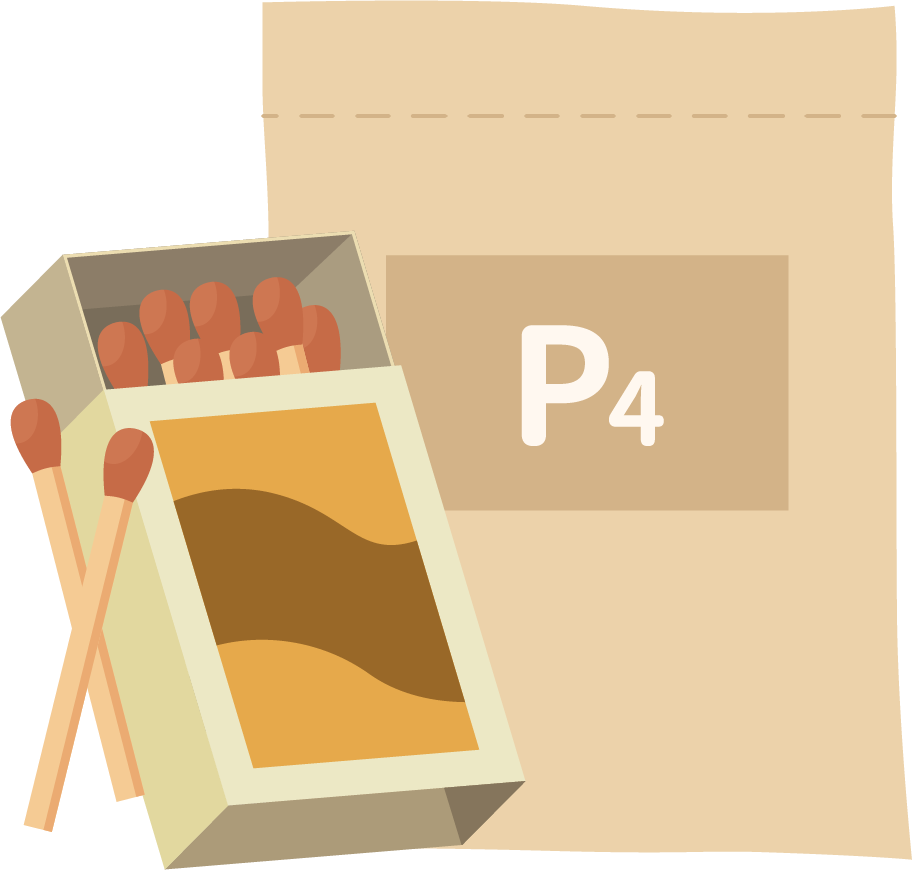 |
| Class 5 Oxidizing substances and organic peroxides | |
| Class 6 Toxic and infectious substances | 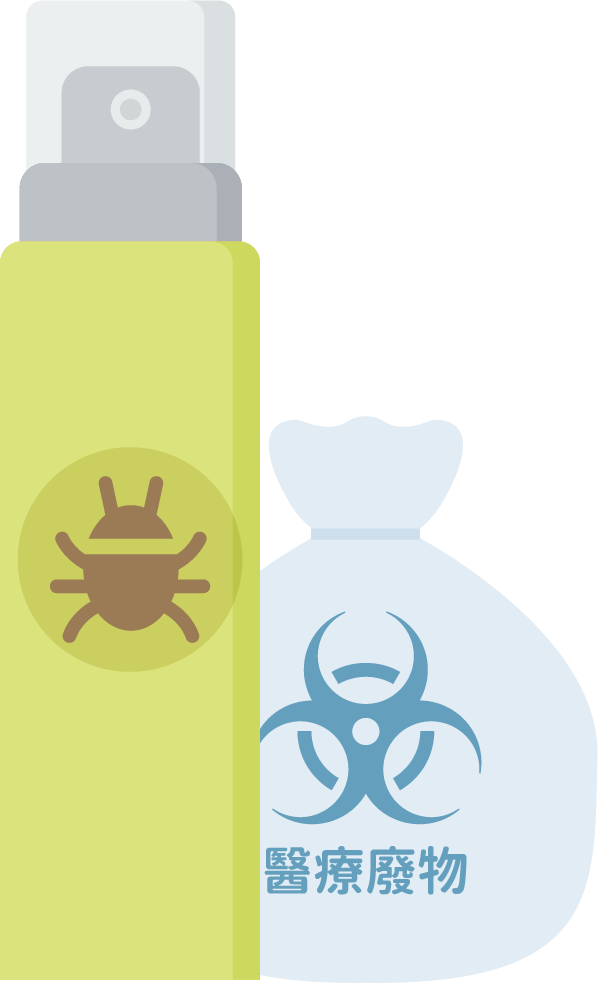 |
| Class 7 Radioactive materials | 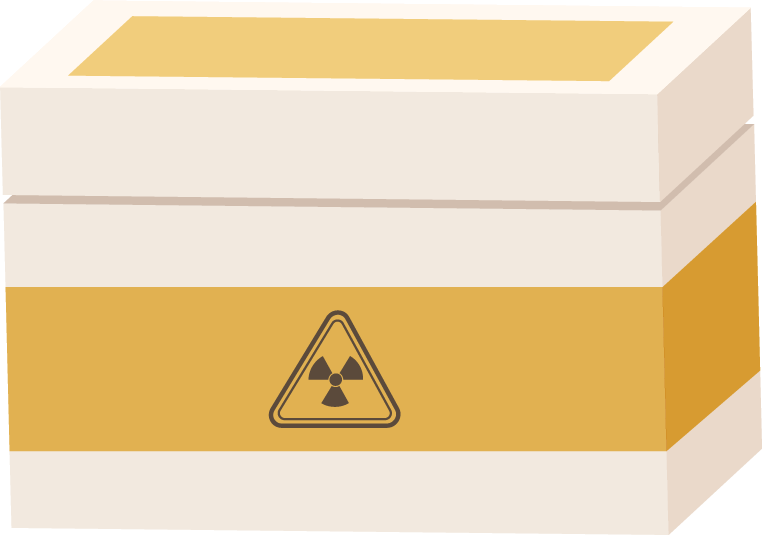 |
| Class 8 Corrosive substances | 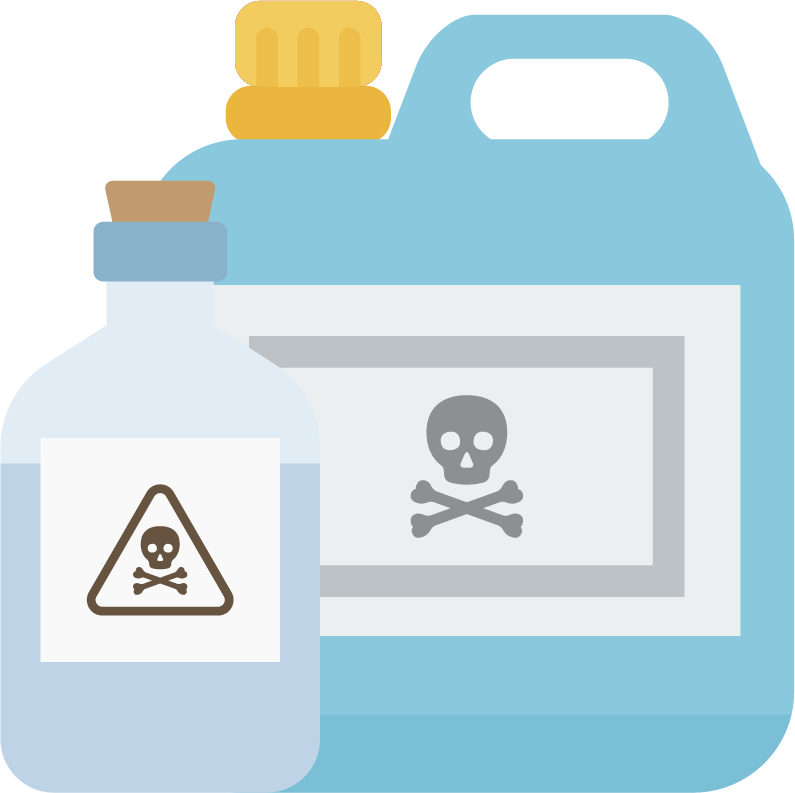 |
Class 9 Miscellaneous dangerous goods (e.g. lithium batteries, dry ice) |
 |
Requirements for the carriage of lithium batteries by air (Wh = Watt hour = Ampere Hour x Voltage)
-
Electronic devices (e.g. laptop computers, cellular phones, cameras, camcorders and so on) or portable medical electronic devices containing lithium metal batteries not exceeding 2 grams or lithium ion batteries not exceeding 100 Wh can be carried both in carry-on baggage or checked-in baggage. All spare batteries must be put in carry-on baggage.
-
For electronic devices or portable medical electronic devices containing lithium metal batteries exceeding 2 grams but not exceeding 8 grams or lithium ion batteries exceeding 100Wh but not exceeding 160 Wh, OR if for health reasons or other special reasons mobility aids (e.g. wheelchairs) that are powered by lithium batteries must be carried during the travel, passengers must make the request to the airline. With the approval of the airline, passengers can then follow the instructions given by the airline to put the devices in carry-on baggage or checked-in baggage. However, all spare batteries must still be put in carry-on baggage.
Details can be found at the following link:
AC/AGA/013R02 Aeronautical Circular – “Restrictions on Dangerous Goods”
Requirements for the carriage of non-spillable wet batteries by air:
-
Non-spillable wet battery (such as lead-acid battery) products are classified as Dangerous Goods Class 8: Corrosive Substances, passengers must comply with the restrictions listed in Article 2), Provision a) ii) of Appendix 1 of AC/AGA/013R02 Aeronautical Circular – “Restrictions on Dangerous Goods”, i.e. each battery should not exceed a voltage of 12 volts and a Watt-hour rating of 100 Wh.
-
Carriage of spillable wet battery products are prohibited.
Since the airlines can establish more stringent requirements, even if your non-spillable wet batteries meet the requirements of AC/AGA/013R02 Aeronautical Circular – “Restrictions on Dangerous Goods”, passengers are advised to check with the airlines for the carriage of these batteries.
Details can be found at the following link:
AC/AGA/013R02 Aeronautical Circular – “Restrictions on Dangerous Goods”
ICAO has specific shipping and packing requirements for the above dangerous goods. Passengers should therefore be aware that air operators (airlines) and security screening agencies reserve the right to limit or forbid the carriage of these items in the interests of aviation safety.
If in doubt, ask!
Common substances found in homes - things such as pesticides, petrol, paint, mineral turpentine, methylated spirit, gas cylinders, oven and drain cleaners, bleach, glues and aerosols – are potentially dangerous goods.
If you are planning to carry some common household items, check to see whether there is a hazardous symbol on the packaging.
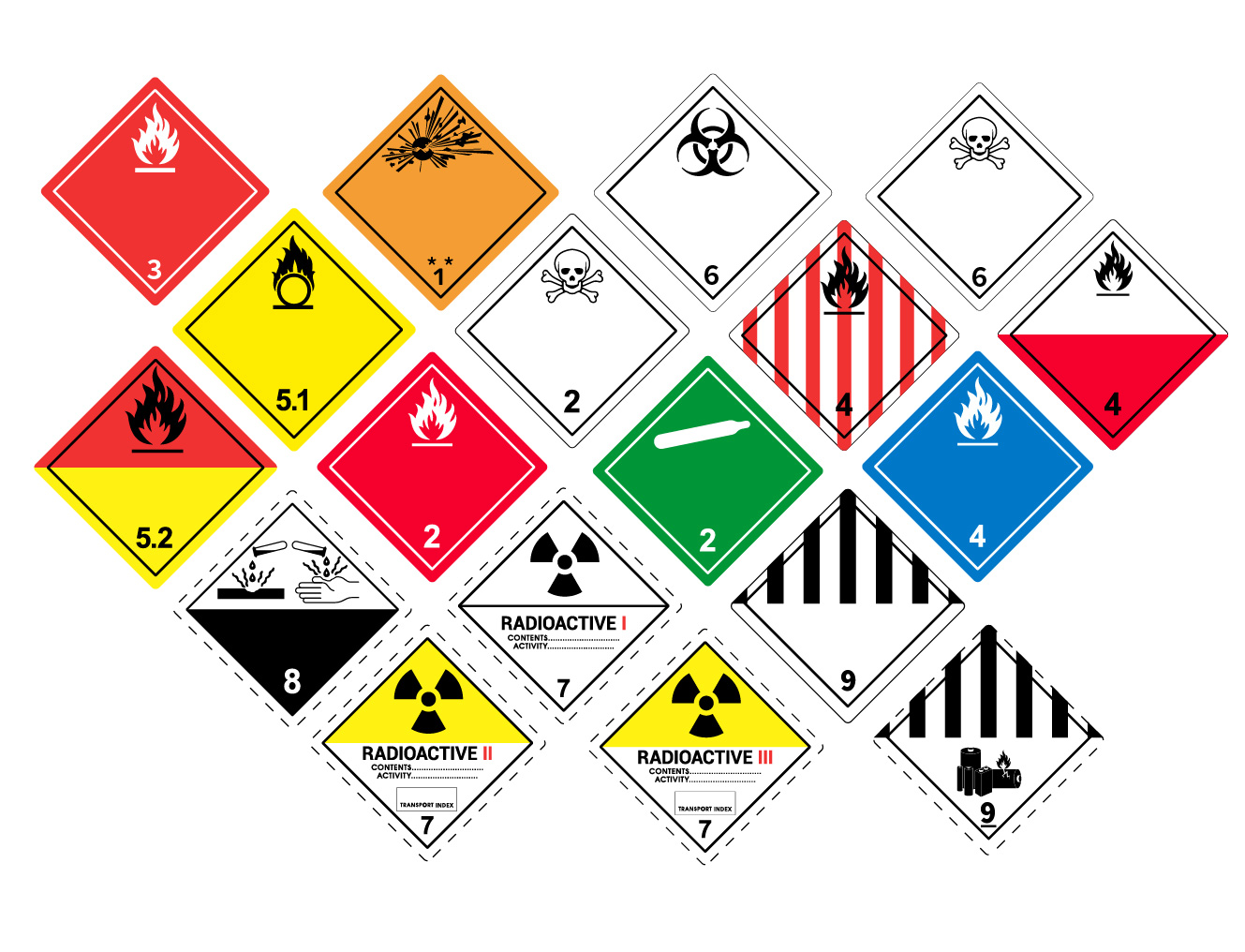
If there is, ask yourself “Do I really need to take it? Or, can I buy it when I get there instead?”. If you are still not sure, please contact the airline you are flying with.


















